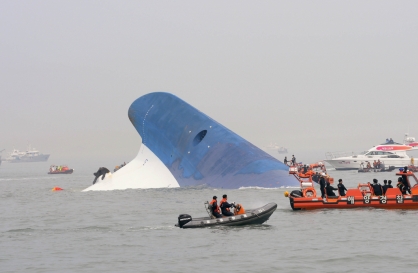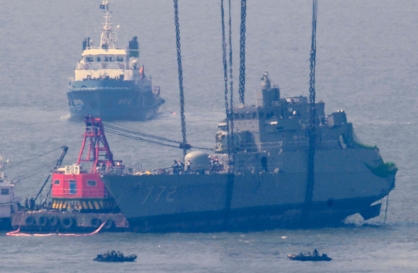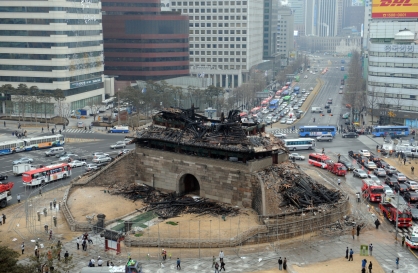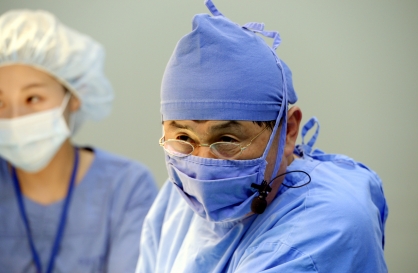Most Popular
Korean History
-
1
2014 ferry disaster left scars that never healed

-
2
In 2012, K-pop makes leap from 'Gangnam' to the world

-
3
Deadly sinking of Navy ship in 2010 marks worst postwar military disaster

-
4
In 2008, Korea's National Treasure No. 1 went down in flames

-
5
In 2005, science world’s biggest scandal unravels in Seoul

[Korean History] NK secret agent behind 1987 KAL bombing now lives ordinary life in South
Korean Air aircraft with 115 aboard blows up in mid-air in a shocking act of terrorism by North
By Kim So-hyunPublished : June 7, 2023 - 16:00

On Nov. 29, 1987, Korean Air Flight 858, en route from Baghdad to Seoul, exploded mid-air as a bomb planted by two North Korean agents inside an overhead storage bin detonated.
All of the 115 people on board, including 104 passengers and 11 crew members, were killed. One hundred and thirteen of them were South Koreans, many of whom were construction workers returning home after years of working in the Middle East. The two other passengers were from India and Lebanon.

The explosion took place above the Andaman Sea, shortly before a scheduled refueling stop at Bangkok, a few hours after it took off from Abu Dhabi, the United Arab Emirates.
The wreckage of the plane was never found and is believed to have sunk under the sea.
Acting on orders from Pyongyang, two North Korean agents had planted a time-bomb inside a Panasonic transistor radio and a bottle of liquid explosive disguised as a liquor bottle in a storage compartment of the plane before disembarking in Abu Dhabi.
Kim Sung-il and Kim Hyon-hui -- under the Japanese aliases Shinichi Hachiya and Mayumi Hachiya -- were arrested in Bahrain by airport officials two days later, just as they were about to board a plane to Rome.
Upon their arrest, both bit into ampules of cyanide hidden in a cigarette case, and the 70-year-old male agent died, but the 25-year-old Kim Hyon-hui survived.

The top story of the Dec. 2, 1987 issue of The Korea Herald reads that the suspects using Japanese names took poison in a suicide attempt, and one of them died, accompanied by photos of Kim Sung-il and the fake passports used by the pair.
Claiming that the cyanide-laced cigarettes are a means of suicide used by North Korean agents, the Seoul government negotiated with Bahrain to bring the surviving agent to South Korea.
Kim Hyon-hui arrived in South Korea a day before the country held its first direct presidential election in 16 years.

The front page of the Dec. 16, 1987 issue of The Korea Herald carries a photo of Kim, flanked by two investigators, exiting from the plane that carried her and the body of her accomplice. Her mouth is covered by a wide bandage to prevent her from killing herself.
Hoping to be sent to China, Kim initially claimed she was a Chinese orphan who had nothing to do with the blowup.
But in addition to the cyanide, the fact that the cavities in the teeth of her partner Kim Sung-il were filled with soldered lead, a common method of cavity treatment in North Korea, was another piece of evidence suggesting the duo were from the North.
After eight days of questioning, during which Kim Hyon-hui went out to see Seoul’s Myeong-dong and realized South Korea was completely different from what she was told in North Korea, she changed her mind and confessed.
On Jan. 15, 1988, Kim said at a press conference held by the South Korean secret services agency that both she and Kim Sung-il were North Korean operatives on a mission to disrupt the upcoming Seoul Olympic Games later that year.
She said the bombing order came directly from Kim Jong-il, the then heir apparent to his father and North Korea’s founding leader Kim Il-sung, who sought to destabilize the South Korean government and scare foreign athletes from attending the Seoul Olympics.
She confessed that the duo had left a radio containing 350 grams of C-4 explosive and a liquor bottle containing about 700 milliliters of PLX explosive, with a timer set to go off after nine hours, in an overhead luggage rack in the passenger cabin of the aircraft.
"I deserve to die a hundred times over for my sin," she said.
In 1990, Kim was sentenced to death for the bombing of KAL 858, but she was later pardoned by then President Roh Tae-woo.
Roh said it was the leaders of North Korea who ought to be on trial, and that Kim was “as much a victim of this evil regime as the passengers aboard KAL 858.”
In 1997, Kim married a former South Korean intelligence officer who had investigated her. She had two children.
Trained for over seven years
Kim Hyon-hui said in media interviews that she was recruited as a North Korean agent at the age of 18 when she was studying Japanese at the Pyongyang University of Foreign Studies.

She said she was trained as a secret agent for seven years and eight months, including a year in a clandestine camp deep in the mountains where she was taught martial arts, shooting, radio communications and how to survive in the wilderness.
Kim said she learned Japanese from Yaeko Taguchi, a Japanese woman abducted by Pyongyang whom she lived with for two years. She was also sent to Guangzhou, China, to learn Mandarin.
When she was summoned back to Pyongyang to receive the order for the bombing mission in 1987, she believed what the North’s spy agency told her -- that it would reunify her divided country -- she later said in media interviews.
“I was like a robot, a tool of the North Korean regime,” she said in a televised interview in 2013.
At the time of the bombing, she said she didn’t feel guilty as she was brainwashed to believe it was a mission she had to carry out as a “revolutionist for the unification” of her country, but in the course of her interrogation and as she met with the victims’ families in court, she realized the gravity of the sin she had committed.
Aftermath
The bombing of Korean Air 858 prompted the US to list North Korea among state sponsors of terrorism.
Washington said it “concluded that the evidence of North Korean culpability is compelling,” and called on “all nations to condemn North Korea for this terrorist action."
In South Korea, the bombing, which took place two weeks before the presidential election, and Kim’s arrival as a key suspect of the atrocious crime are believed to have fueled anti-Pyongyang sentiment.
And that might have affected the outcome of the election to an extent: Roh Tae-woo, an ex-army general and closest aide to dictator Chun Doo-hwan, was elected president, defying predictions of a liberal win after years of military rule.
There were conspiracies that Kim Hyon-hui was a fake, an operative of South Korea’s Agency for National Security Planning, what is now the National Intelligence Service, playing a part in a high-stakes political ruse, and another investigation into the case was opened under the Roh Moo-hyun administration, but it was concluded in 2006 and 2007 that there was no evidence of fabrication.
“The reason I am still alive is because I am the witness (of the bombing),” Kim said in the 2013 interview.
In 2020, a local broadcaster reported that it found a wing-shaped object and a part of the fuselage of Korean Air 858 at the bottom of the Andaman Sea, using 3D sonar.
The South Korean government sought to search for and bring back the wreckage, but the plan fell through due to a lack of cooperation from the military government of Myanmar.





![[Herald Interview] How Gopizza got big in India](http://res.heraldm.com/phpwas/restmb_idxmake.php?idx=644&simg=/content/image/2024/11/20/20241120050057_0.jpg&u=20241120164556)


![[KH Explains] Dissecting Hyundai Motor's lobbying in US](http://res.heraldm.com/phpwas/restmb_idxmake.php?idx=644&simg=/content/image/2024/11/20/20241120050034_0.jpg&u=)
![[Kim Seong-kon] Farewell to the vanishing John Wayne era](http://res.heraldm.com/phpwas/restmb_idxmake.php?idx=644&simg=/content/image/2024/11/19/20241119050096_0.jpg&u=)
![[Graphic News] 70% of S. Koreans believe couples can live together without tying the knot: survey](http://res.heraldm.com/phpwas/restmb_idxmake.php?idx=644&simg=/content/image/2024/11/19/20241119050098_0.gif&u=)












![[Today’s K-pop] Blackpink’s Jennie, Lisa invited to Coachella as solo acts](http://res.heraldm.com/phpwas/restmb_idxmake.php?idx=642&simg=/content/image/2024/11/21/20241121050099_0.jpg&u=20241121172748)